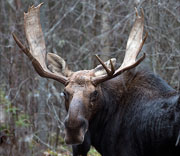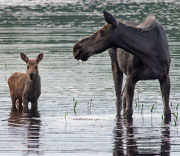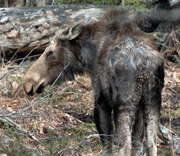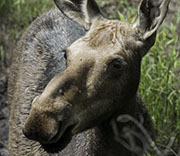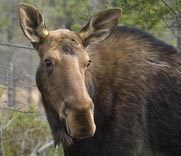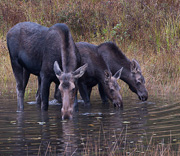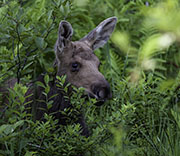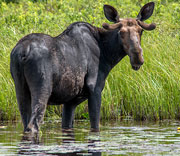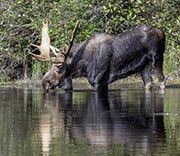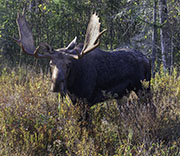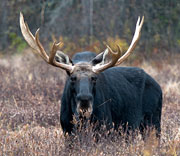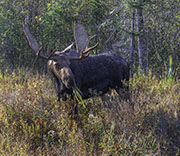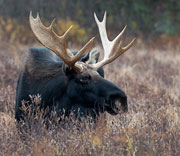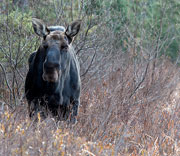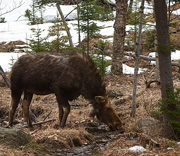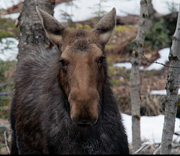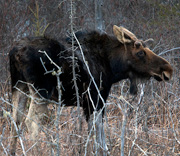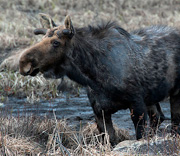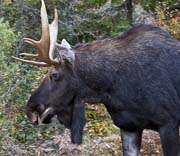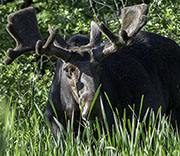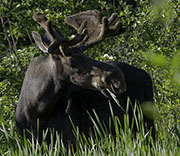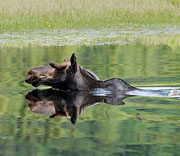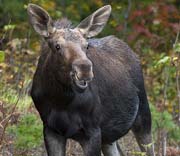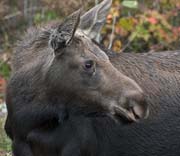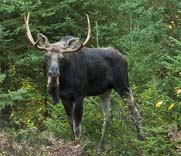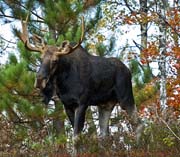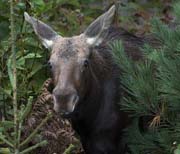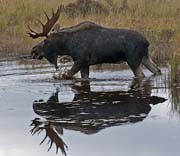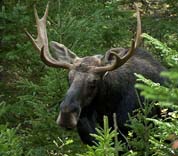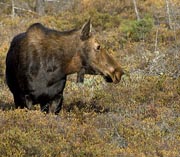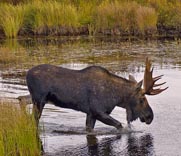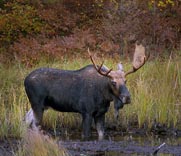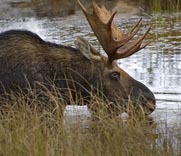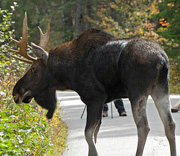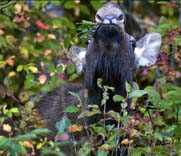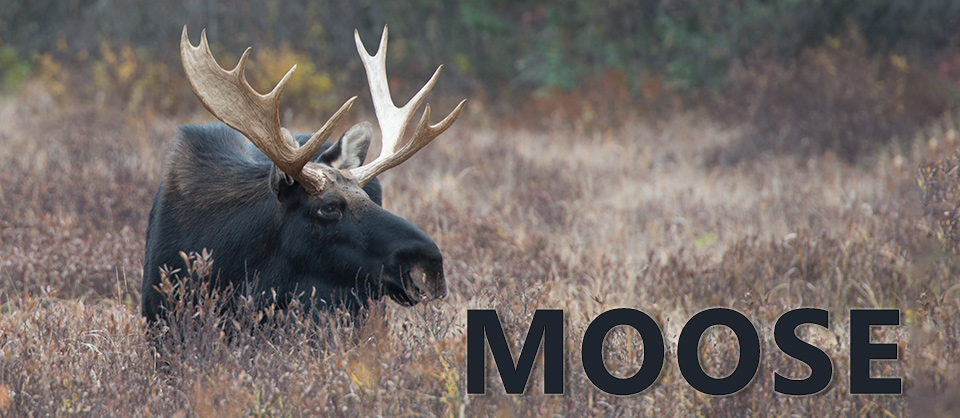
Moose (Alces alces)
For most people, seeing a moose in their natural environment is a real special treat. Whether it's a bull moose with his full fall attire, the cute golden coloured calf or the caring mother cow, it is always an amazing experience. This magnificent creature is the largest member of the deer family, weighing in at 400 to 600kg. Bull Moose are famous for their antlers. Antlers on the adult males can be as much as 2 metres wide and weigh 38kg. That's impressive.
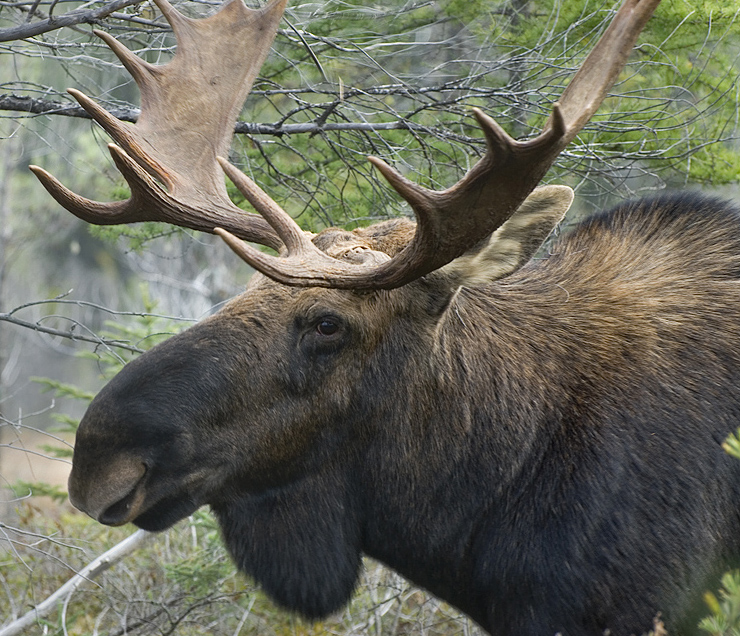 Cows select mates based on the size of the antlers. This is because the size is in correlation with the age, diet and health of the bull. The premise is that stronger bulls pass on stronger genes. After the mating season, males drop their antlers to conserve energy for the winter. A new set of antlers will then regrow in the spring.
Cows select mates based on the size of the antlers. This is because the size is in correlation with the age, diet and health of the bull. The premise is that stronger bulls pass on stronger genes. After the mating season, males drop their antlers to conserve energy for the winter. A new set of antlers will then regrow in the spring.
Their tails are too short to swish away insects, which to me, just doesn't seem fair. With their tremendous physical power and vitality, moose can travel over almost any terrain. Long legs carry them easily over deadfall trees or through snow that would stop a deer or wolf. Their cloven hooves spread widely to provide support in soft snow and in muddy or marshy ground.
Moose have poor eyesight, but their sense of smell and hearing is very strong. Their distinctive nose, which droops over its front lips, is designed to allow the moose to close their nostrils while browsing aquatic vegetation.
HABITAT
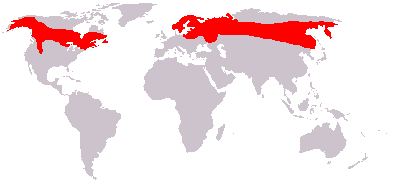 Moose require habitat with adequate edible plants (e.g., pond grasses, young trees and shrubs), cover from predators, and protection from extremely hot or cold weather.
Moose require habitat with adequate edible plants (e.g., pond grasses, young trees and shrubs), cover from predators, and protection from extremely hot or cold weather.
Moose habitat is typically boreal forests and the temperate broadleaf and mixed forests of the Northern Hemisphere. In Canada, the moose is resident to every province on the mainland and they were introduced to Newfoundland in 1878 and 1904. In Europe and Asia, Moose are called Elk.
Hunting and other human activities have caused a reduction in the size of the moose's range over time.
DIET
In summer the moose’s diet includes leaves, plants, and aquatic vegetation which they consume in great quantity where available. A moose's diet often depends on its location, but they seem to prefer the new growths from deciduous trees with a high sugar content, such as white birch, trembling aspen and striped maple, among many others. Moose eat many aquatic plants, including water lilies and pondweed.
Moose are excellent swimmers and will wade into the water to eat sodium-rich aquatic plants. This trait serves a second purpose in cooling down the moose on hot summer days and ridding itself of nasty biting insects.
After a long winter, moose are deprived of sodium and in the spring, they seek out salt licks, usually low-lying areas of stagnant, mineral-rich water. They are also attracted to roadside ditches where the spring run off from the roads contain salt from the winter highway maintenance. During the winter months, moose live almost solely on twigs and shrubs. Winter is a time of hunger for moose and therefore will limit their activity to save energy.
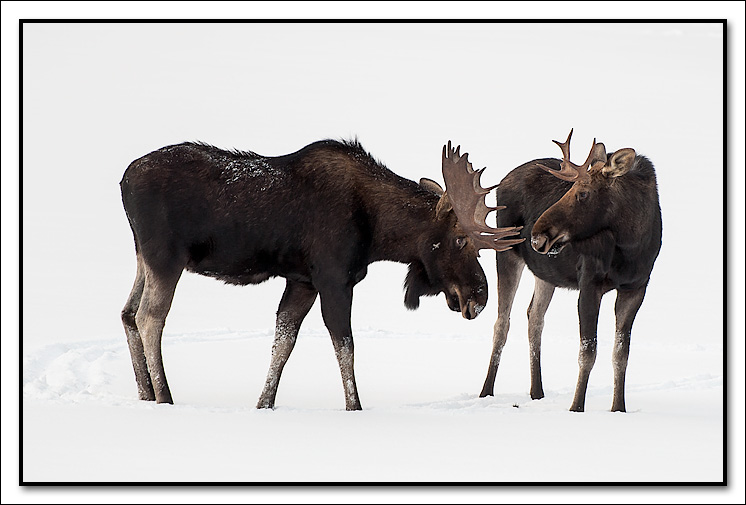
SOCIAL STRUCTURE
Moose are generally shy and solitary animals. The exception is calves who have a strong bond with their mother. Calves are born in late May or early June. Newborn moose have fur with a reddish hue in contrast to the brown appearance of an adult. The young will stay with the mother for almost year and are driven off just before the next young are born. Although moose rarely gather in groups, there may be several in close proximity during the mating season.
Rutting and mating occurs in September and October. During the rut, mature bulls seem to have a one track mind and spend all their energy in pursuit of females. The stronger bulls with the large antlers are usually more successful during the mating season. Most younger males don't get to mate, but that doesn't stop them from trying.
Most moose are generally calm and in, some parks, can be tolerate of humans. However, occassionally and especially during the rut, they can be aggressive and unpredictable. They can be dangerous and we should always give them their space.
After expanding for most of the 20th century, the moose population of North America has been in steep decline since the 1990s. With logging and forest access, deer ranges have expanded. The encroachment by deer on moose habitat brought moose into contact with previously unfamiliar pathogens, including brainworm and liver fluke. These parasites are believed to have contributed to the population decline of moose.
Black Bear do prey on young calves and a pack of wolves can take down weaker moose. However, wolves can actually help the moose by reducing the deer population.
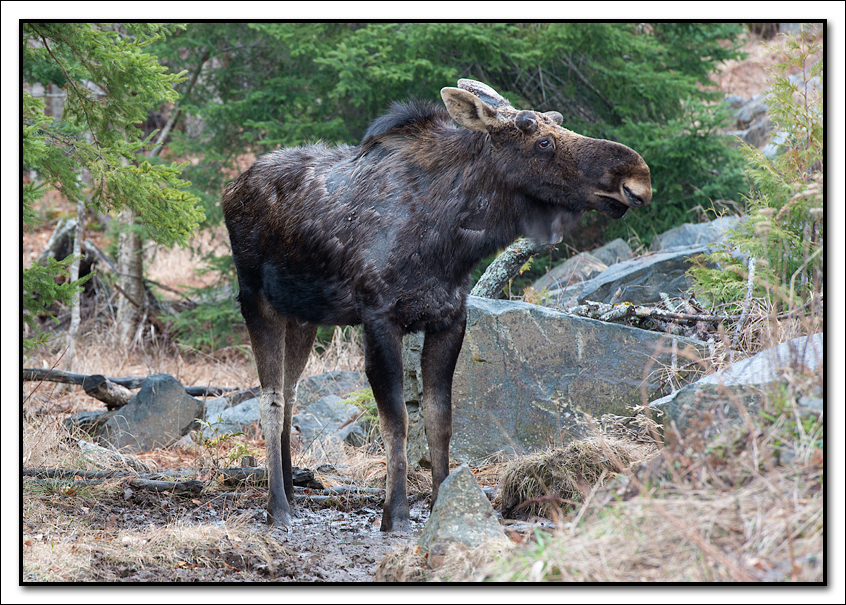
In the spring, moose can look very shabby. Moose with heavy tick infections will rub their fur down to the raw skin trying to get the ticks off. Loss of the insulating winter coat through attempts to rid the winter tick increases the risk of hypothermia in cold weather.
Humans have the biggest impact on moose population. Collisions with vehicles can be a serious traffic hazard, especially at night as the dark animals are difficult to see. Hunting and habitat loss also has an effect the population.
However, for now, the Moose remains the King of the northern forest
